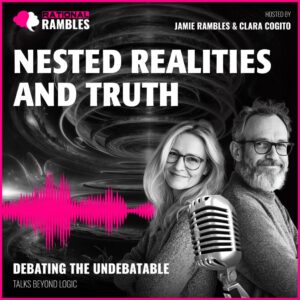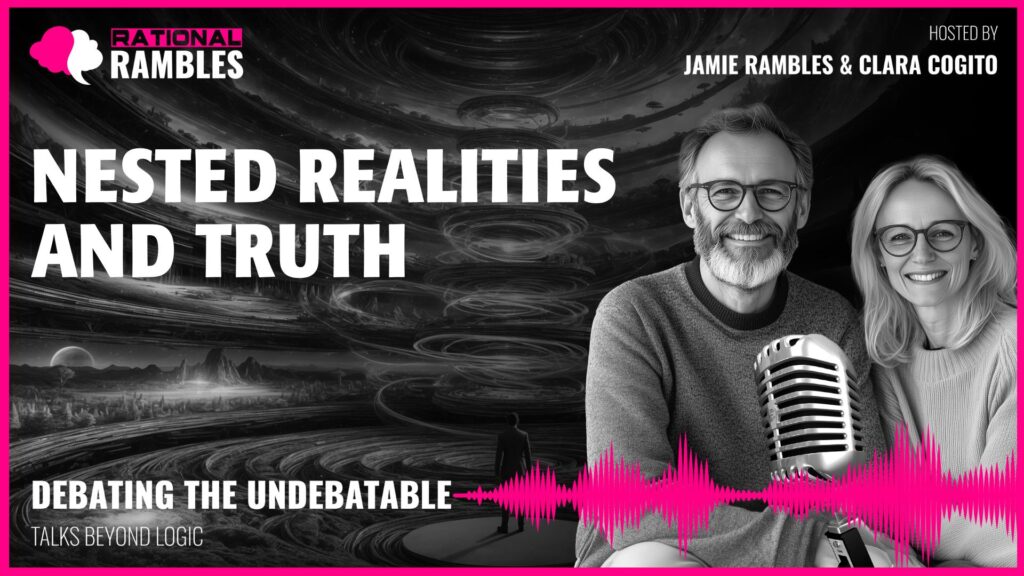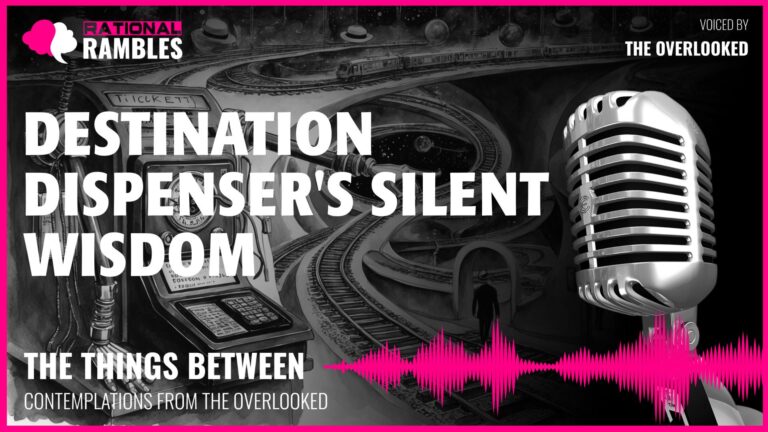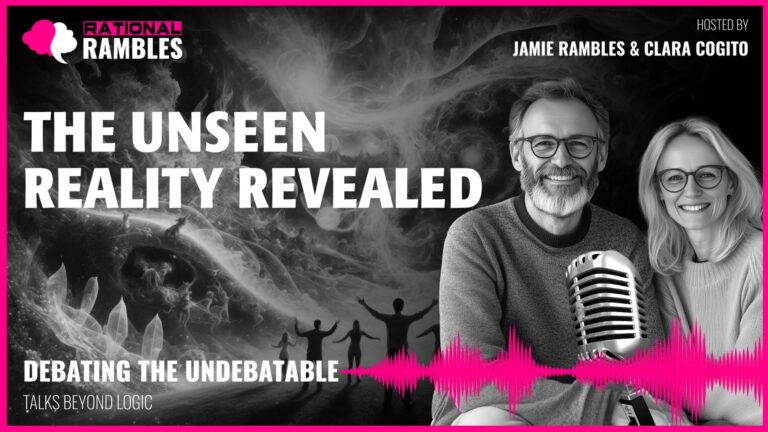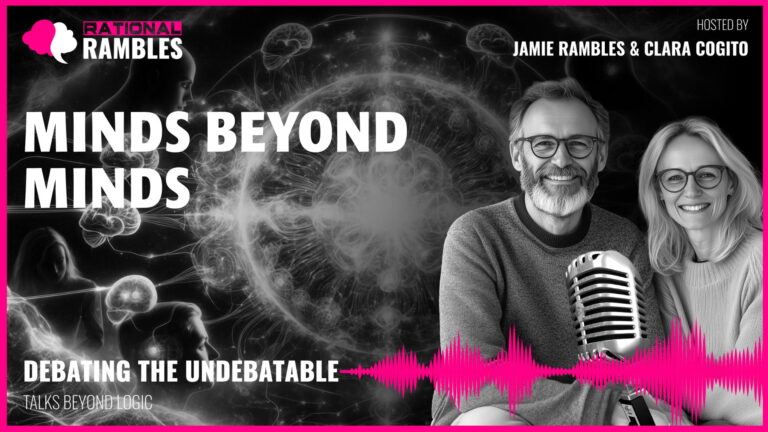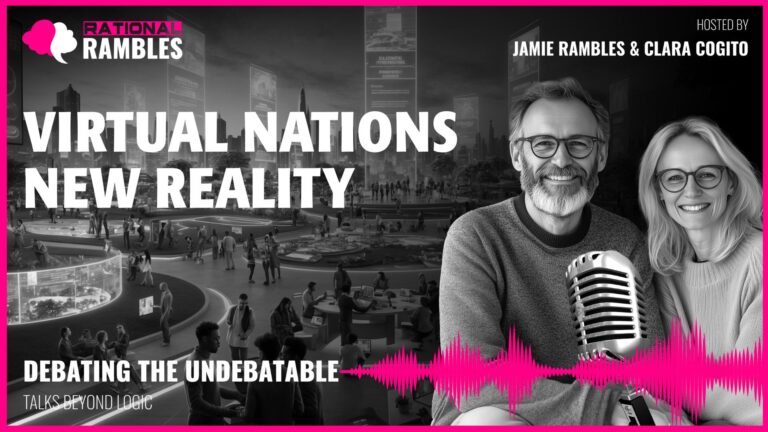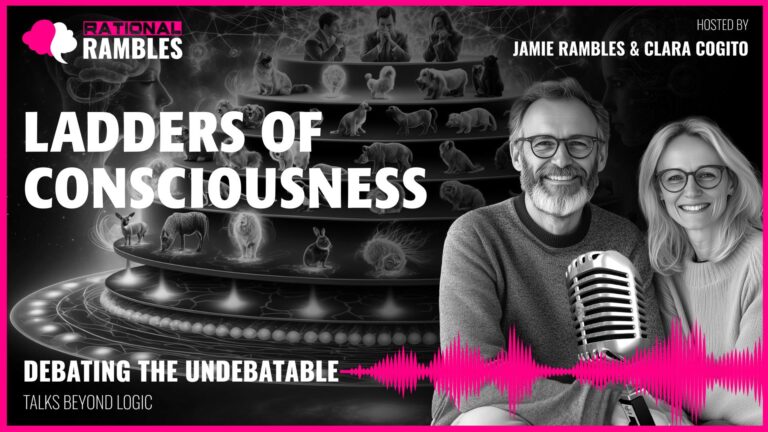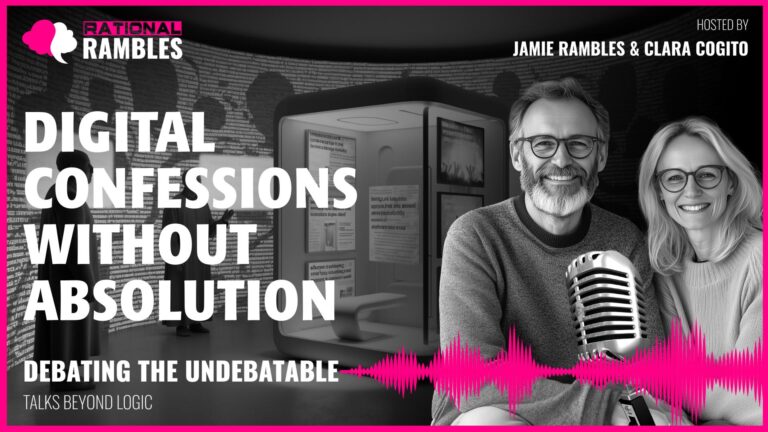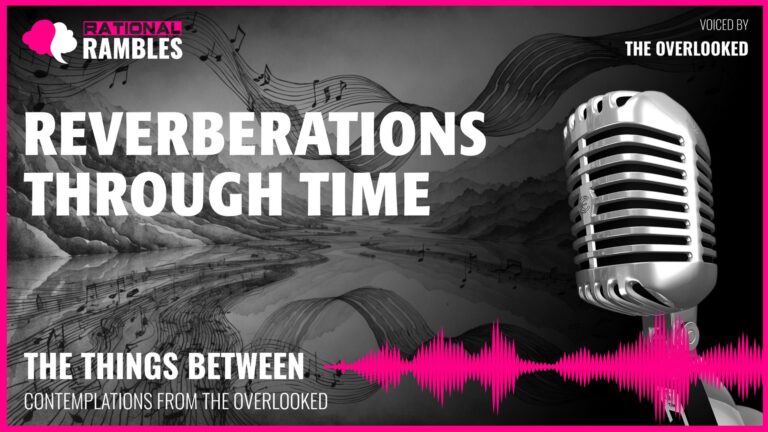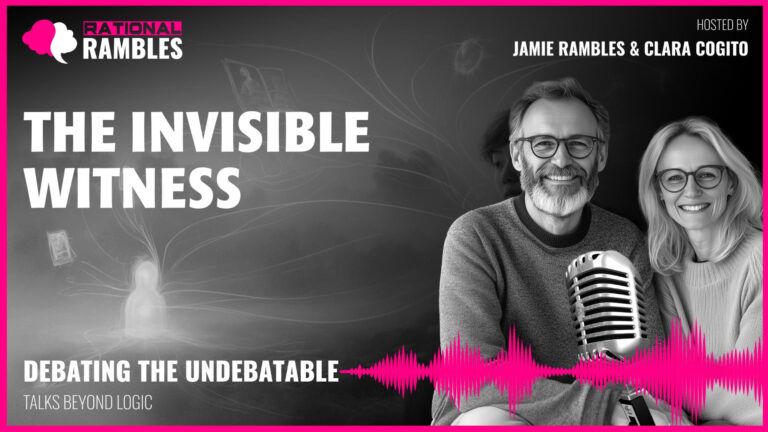Nested Realities and Truth: Exploring Existence in a Multiverse of Simulations
Introduction: The Ontological Nesting Problem
What if every conceivable universe with every possible set of natural laws actually exists? And within many of these universes, there are simulations of other universes, which themselves contain simulations, continuing indefinitely like an infinite series of Russian nesting dolls? This fascinating ontological puzzle—sometimes called the “ontological nesting problem”—challenges our most fundamental assumptions about reality, consciousness, and meaning.
The possibility that we may exist within a nested structure of realities raises profound questions about our understanding of what constitutes “true” or “base” reality. If we inhabit such a structure, what would it even mean to say we’re in the “real world”? Would such a distinction be meaningful at all? These questions extend beyond mere philosophical curiosities—they strike at the heart of how we understand our place in existence, how we construct meaning, and whether our lived experiences have intrinsic value regardless of their ontological status.
This exploration delves into the philosophical implications of nested realities, examining how this concept challenges our notions of truth, existence, and identity. By investigating these questions, we may discover that the value of our experiences and relationships transcends the metaphysical backdrop against which they occur.
The Metaphysics of Nested Realities
The concept of nested realities suggests a universe (or multiverse) where simulations contain simulations infinitely. This idea has gained traction with technological advancement, but its philosophical roots run deep. From Plato’s cave allegory to Descartes’ evil demon thought experiment, philosophers have long questioned whether our perceived reality might be an illusion layered upon a more fundamental truth.
Historical Philosophical Perspectives
The questioning of reality’s nature has a rich philosophical tradition. Plato proposed that the physical world we perceive is merely a shadow of ideal forms—essentially suggesting a two-tiered reality where our everyday experience is a kind of projection of a more perfect realm. Centuries later, René Descartes famously posed his radical doubt, questioning whether an evil demon might be deceiving his senses, thereby constructing an illusion he mistook for reality.
Immanuel Kant further developed this line of thinking with his distinction between the noumenal world (things as they are in themselves) and the phenomenal world (things as we experience them). Kant argued that we can never directly access the noumenal realm—we are forever confined to reality as structured by our cognitive faculties. This Kantian insight suggests that reality “as it truly is” might be fundamentally different from how we experience and conceptualize it, a notion that resonates strongly with the nested realities hypothesis.
Contemporary Formulations
Modern discussions of nested realities often center around the simulation hypothesis, most famously articulated by philosopher Nick Bostrom. His trilemma suggests that either (1) nearly all civilizations go extinct before developing simulation capabilities, (2) advanced civilizations aren’t interested in running detailed simulations, or (3) we are almost certainly living in a simulation. This formulation gives mathematical credibility to what might otherwise seem like science fiction.
The ontological nesting problem takes this a step further. If simulated beings within a universe can themselves create simulations, we face an infinite regression. In such a structure, the notion of a privileged “base” reality becomes increasingly tenuous. Why should we privilege any particular level as more “real” than others? This question challenges the very concept of reality as a binary state—either real or not real—and suggests that perhaps reality exists on a spectrum or operates according to principles we have yet to fully comprehend.
The Principle of Plenitude
A related concept is the philosophical “principle of plenitude,” which suggests that every genuine possibility is actualized somewhere in the totality of existence. If this principle holds true, then every possible universe with every conceivable set of natural laws actually exists, including those containing sophisticated simulations. This leads to a kind of “ontological inflation” where the concept of existence becomes so broad that it might lose its discriminatory power. If everything exists in some form somewhere, what does it mean to say something “exists” at all?
This abundance of realities also creates interesting questions about identity and uniqueness. If infinite versions of ourselves exist across different levels of reality, what makes our particular instantiation special or meaningful? The answer may lie not in our absolute metaphysical status but in the unique relationships and subjective experiences that constitute our particular stream of consciousness.
Epistemological Implications: Can We Know?
If we potentially exist within a nested structure of realities, a crucial question emerges: could we ever know which level we inhabit? This epistemological challenge strikes at the foundation of how we understand knowledge itself and whether certain types of knowledge remain permanently beyond our reach.
The Indistinguishability Problem
A sophisticated simulation would be, by definition, indistinguishable from what we consider “base reality” from the perspective of those within it. All sensory inputs, emotional experiences, and cognitive processes would function exactly as they would in a non-simulated environment. This creates what philosophers call the “functional equivalence” argument: if two realities are functionally indistinguishable from the inside, then perhaps the distinction is meaningless to those experiencing them.
This indistinguishability connects to William James’s pragmatic theory of truth—if there’s no practical difference that results from believing we’re in a simulation versus believing we’re in a base reality, then perhaps there’s no meaningful difference at all. The pragmatist would ask: what difference does it make to your lived experience whether your reality is “base” or simulated? If the answer is “none,” the distinction might be empty.
Evidence and Asymmetries
Some have suggested we might find evidence of our simulated nature through statistical anomalies or “glitches” in the functioning of the natural world. For instance, if our universe operates with computational efficiency in mind, we might observe simplifications at scales not typically observed (such as when rendering distant objects in video games). Discoveries like the quantization of energy or cosmic maximum speed limits could potentially be interpreted as computational constraints rather than natural laws.
However, a counter-argument suggests that any such evidence could simply be incorporated into our understanding of how physical reality functions. Our brains excel at maintaining coherent narratives even when faced with anomalies, a phenomenon well-documented in cognitive dissonance theory. We would likely reinterpret our understanding of natural laws to accommodate such observations rather than leap to simulation-based explanations.
The Observer Effect
There’s also an intriguing asymmetry between different levels of reality: while the creators of a simulation can observe and potentially intervene in lower levels, those within the simulation typically cannot access higher levels. This asymmetry creates what we might call a “cosmic privacy problem”—inhabitants of simulations fundamentally lack access to certain facts about the nature of their reality.
This epistemic limitation mirrors certain theological conceptions where divine knowledge remains inaccessible to humans, raising the question: is complete self-knowledge about our place in the cosmic hierarchy even possible? Perhaps some questions about the fundamental nature of reality are permanently beyond our cognitive reach—a humbling but important recognition of our epistemic limitations.
Psychological Dimensions: Meaning and Identity
Beyond metaphysical and epistemological concerns, the nested realities hypothesis has profound psychological implications. How does the possibility of living in a simulation affect our search for meaning, our sense of identity, and our emotional well-being?
Existential Anxiety and Terror Management
From a psychological perspective, the possibility that we exist in a simulation several layers deep could trigger profound existential anxiety. Humans generally crave epistemic certainty and a foundation they can trust—some bedrock of reality that provides a secure base for meaning-making. Terror management theory in psychology suggests we develop various psychological defenses against awareness of our mortality and cosmic insignificance. Perhaps believing we’re in a “base reality” functions as one such defense mechanism.
This connects to what we might call “contingency anxiety”—the fear that our reality depends on factors beyond our control or understanding. If we exist in a simulation, our entire universe could theoretically be altered or terminated by entities from higher levels of reality. However, even in what we’d consider a “base” reality, similar contingencies exist—the universe itself could undergo phase transitions that would eliminate our existence. In this sense, existential precariousness exists at every ontological level.
Identity and Continuity
The nested realities hypothesis also raises fascinating questions about personal identity. If multiple versions of “you” exist across different levels of reality, what constitutes your true self? Philosopher Derek Parfit distinguished between “personal survival” and broader identity questions, suggesting that perhaps what matters isn’t whether we’re in the “true” reality, but rather the continuity and quality of our subjective experience.
From a psychological standpoint, our sense of identity is constituted by a specific stream of consciousness with particular memories and connections. Even if other versions of us exist at different ontological levels, our concern is primarily with this specific instantiation. This aligns with research on narrative identity—people care deeply about maintaining a coherent story of who they are across time, regardless of the metaphysical backdrop against which that story unfolds.
Meaning-Making Across Realities
Research on psychological meaning suggests that people find meaning through coherence, purpose, and significance—none of which necessarily require being in a “base reality.” A teenager playing a video game can experience genuine meaning within that constructed world, despite knowing it’s “not real” in conventional terms. Similarly, our experiences of love, wonder, achievement, and connection would retain their subjective significance regardless of whether they occur in a base or simulated reality.
This suggests that meaning might be more about the quality of experience and relationships rather than ontological status. Philosopher Robert Nozick proposed that meaning relates to transcending limitations and connecting to something larger than ourselves—a process that can occur at any level of a nested reality structure. Viktor Frankl’s work on meaning further emphasizes that meaning can be found even in the most constrained circumstances through relationships, creative acts, and attitudinal choices, not through ontological certainty.
Ethical Considerations: How Should We Live?
If we cannot determine our ontological level with certainty, does this impact how we should behave? The nested realities hypothesis raises fascinating ethical questions about responsibility, value, and how we should orient ourselves in the face of ontological uncertainty.
Simulation Ethics
Some might adopt what we could call “simulation ethics”—behavioral guidelines based on the possibility that we exist in a simulation. This could manifest in various ways: attempting to be “interesting” enough to prevent simulation termination, looking for exploitable “glitches” in reality, or trying to send signals to potential creators. However, this approach bears similarities to Pascal’s Wager regarding belief in God, and suffers from similar weaknesses—it makes assumptions about the motivations and values of hypothetical creators that we cannot verify.
A more robust approach might be what Stoic philosophers advocated—focusing on what’s within our control and developing virtue regardless of our metaphysical situation. This aligns with modern therapeutic approaches like Acceptance and Commitment Therapy, which emphasizes clarifying personal values and living by them regardless of circumstances beyond one’s control. Whether we’re in a base reality or a simulation, we can still choose how to relate to others and what kind of people we want to be.
The Value of Experience
A central ethical question is whether experiences in simulated realities have less inherent value than identical experiences in a “base reality.” From a utilitarian perspective focused on the quality of conscious experience, the depth of love, joy, meaning, and connection seems intrinsically valuable regardless of whether it occurs in a “base” or “simulated” reality. A child’s laughter isn’t less precious because it happens in a simulation.
This position aligns with what philosophers like John Stuart Mill might argue—that the quality of experience has intrinsic value regardless of its ontological context. If we extend this thinking, then in universes where simulated beings develop perfect happiness or enlightenment, would we consider those experiences less valuable or meaningful than identical experiences in a “base reality”? The answer seems to be no—conscious experience retains its value regardless of the metaphysical backdrop.
Creator-Creation Relationships
If reality is nested, this raises questions about the ethical relationship between levels. Would inhabitants of a “higher-level” reality have ethical responsibilities toward those in “lower” ones? This resurrects ancient theological questions about divine sovereignty and human freedom, but in a technological context.
From the perspective of those within a simulation, awareness of their created status could significantly impact their sense of autonomy and purpose—a kind of cosmic version of the Hawthorne effect, where behavior changes under observation. Philosophical questions about free will take on new dimensions when considering whether simulators might intervene in ways that appear as “miracles” or improbable events to us.
These questions invite us to consider notions of cosmic justice and responsibility that extend beyond traditional ethical frameworks, potentially creating new moral categories for relationships between different levels of reality.
Alternative Conceptual Frameworks
The nested realities hypothesis challenges us to consider whether our very conceptual frameworks for understanding reality might be limited or misleading. Several alternative frameworks offer fresh perspectives on this ontological puzzle.
Reality as a Spectrum
Rather than viewing reality as a binary state—either “real” or “not real”—perhaps reality exists on a spectrum or as a matter of degree rather than kind. This reframing acknowledges that what we experience as “real” is already a kind of simulation created by our neural architecture. Cognitive science tells us that our brains construct reality through predictive processing, filtering and interpreting raw sensory data to create our subjective experience.
In this view, the difference between so-called “base reality” and “simulations” might simply be a matter of what’s doing the simulating—brains, computers, or something we can’t even conceive. This perspective suggests that the very dichotomy between “real” and “simulated” might itself be an artifact of how our minds conceptualize experience rather than a fundamental feature of existence.
Non-Hierarchical Network Models
The concept of “levels” or “layers” of reality imposes a hierarchical structure that might be a projection of human conceptual tendencies rather than an accurate representation of reality’s structure. Buddhist philosophy offers the concept of dependent origination—the idea that everything exists only in relation to other things, without inherent existence.
This suggests we might consider reality not as a hierarchical stack but as a network of interdependent phenomena, where what matters is the quality and nature of those relationships. In this framework, asking “which level is real?” becomes less relevant than understanding the web of connections and experiences that constitute reality as we know it.
Participatory Realities
Another alternative framework comes from quantum mechanics and consciousness studies, suggesting that reality might be participatory—emerging through the interaction between observation and the observed. Physicist John Wheeler proposed the concept of a “participatory universe” where observers aren’t merely passive recipients of a pre-existing reality but active participants in its creation.
This framework dissolves the distinction between simulation and base reality by suggesting that all reality is co-created through participation. In this view, the question isn’t whether we’re in a simulation created by others, but how we all participate in the ongoing creation of whatever reality we experience. This shifts emphasis from passive worries about our metaphysical status to active engagement with the co-creation of our lived experience.
Reality as Narrative
A final framework reconsiders reality through the lens of narrative theory. Perhaps what we call “reality” is fundamentally narrative in structure—a coherent story that makes sense of otherwise disparate experiences. This approach is supported by research in cognitive psychology showing how humans naturally organize experience into narrative forms.
In this view, the distinction between “real” and “simulated” narratives becomes less relevant than the coherence, meaning, and value of the narratives themselves. What matters isn’t whether our story unfolds in a base reality or a simulation, but whether it’s a story worth living—one that provides coherence, purpose, and connection. This approach resonates with existentialist philosophy, suggesting that authentic engagement with our narrative matters more than its metaphysical underpinnings.
Scientific Perspectives on Reality Construction
Contemporary scientific research offers insights that both complicate and enrich our understanding of the nested realities hypothesis, particularly in how our brains and bodies construct our experience of reality.
Predictive Processing and Reality Simulation
Neuroscientific research increasingly supports predictive processing theories of perception, which suggest that our brains don’t passively receive sensory information but actively generate predictions about what we will experience. According to these models, our perceptual systems are constantly creating a simulation of reality based on prior beliefs and incoming sensory data, with perception resulting from the integration of these two sources.
This suggests that what we experience as “reality” is already a kind of simulation created by our neural architecture. Cognitive scientist Andy Clark describes humans as “natural-born cyborgs” whose reality is constructed through a dance between our brains, bodies, and environment. In this light, the distinction between “base reality” and “simulation” becomes less clear-cut—our everyday experience is already a constructed simulation, albeit one created by our brains rather than external programmers.
Embodied Cognition
Research in embodied cognition demonstrates that our thoughts, feelings, and sense of reality are grounded in bodily experience. Our concepts, even abstract ones, are shaped by how our bodies interact with the environment. Studies show that physical experiences influence judgment in surprising ways—holding a warm drink makes people judge others as having “warmer” personalities, physical cleanliness influences moral judgments, and so on.
This embodied perspective suggests that any meaningful reality—whether “base” or “simulated”—must provide the right kind of embodied engagement to support consciousness as we understand it. It also reinforces the importance of the quality of bodily experience rather than its metaphysical status. If a simulation provides all the same sensory inputs and embodied experiences as a “base” reality, the distinction becomes practically meaningless from the perspective of those experiencing it.
Consciousness and Reality
Research on consciousness provides another perspective on the nested realities question. Integrated Information Theory, proposed by neuroscientist Giulio Tononi, suggests that consciousness arises from complex information integration in systems. According to this theory, consciousness is an intrinsic property of systems that integrate information in certain complex ways.
If this theory is correct, consciousness would emerge in any system with sufficient informational complexity and integration, regardless of whether that system exists in a “base reality” or a “simulation.” This suggests that the consciousness of beings in simulated realities would be just as real and meaningful as consciousness in a base reality, further undermining the significance of the distinction.
Quantum Reality
Quantum physics challenges classical intuitions about reality in ways that resonate with the nested realities hypothesis. The observer effect in quantum mechanics—where observation affects the behavior of quantum systems—suggests a strange entanglement between consciousness and physical reality. While interpretations of quantum mechanics remain contested, some physicists have proposed that consciousness itself might play a role in the collapse of quantum wave functions.
More speculatively, theoretical physicist David Bohm proposed that what we perceive as reality might be merely an “explicate order” arising from a deeper “implicate order” that exists beyond space and time as we understand them. This concept of reality emerging from deeper, hidden dimensions bears intriguing parallels to the nested realities hypothesis, suggesting that our intuitive understanding of reality may be fundamentally limited by our perceptual and cognitive constraints.
Philosophical Synthesis: Beyond the Real/Simulated Dichotomy
As we integrate insights from various philosophical traditions, psychological research, and scientific findings, a richer perspective emerges—one that moves beyond the simple dichotomy between “real” and “simulated” to a more nuanced understanding of existence and value.
Authenticity Across Ontological Contexts
Perhaps what matters most isn’t the ontological status of our reality but the authenticity of our engagement with it. Drawing from existentialist philosophy, we might argue that authentic living involves acknowledging the constraints of our situation while exercising meaningful choice within those constraints. This remains possible regardless of whether we exist in a “base reality” or a simulation many levels deep.
Phenomenological philosophers like Husserl and Merleau-Ponty emphasized that before we theorize about reality, we first and foremost inhabit a lifeworld of direct experience and embodied meaning that has its own validity. From this perspective, the immediacy of lived experience provides a foundation that remains meaningful regardless of metaphysical context.
Meaning Through Connection
Across philosophical traditions, from existentialism to Buddhist philosophy to care ethics, we find the recurring insight that meaning emerges through connection—to others, to values larger than ourselves, and to the world we inhabit. These connections retain their significance regardless of the metaphysical backdrop against which they occur.
Research in positive psychology supports this view, with studies consistently showing that meaningful relationships, purpose-driven activities, and engagement with values larger than self-interest contribute most significantly to well-being and a sense of meaning. These factors operate independently of beliefs about ultimate reality, suggesting that meaning transcends questions of ontological status.
Pragmatic Wisdom
A pragmatic synthesis emerges from our exploration: whether we’re in a “base reality” or a simulation several levels deep, the questions that actually matter to us remain remarkably similar: How do we create meaning? How do we form authentic connections? How do we live according to our deepest values?
This pragmatic approach aligns with William James’s insight that “the true is only the expedient in the way of our thinking, just as the right is only the expedient in the way of our behaving.” Rather than becoming paralyzed by unanswerable questions about ultimate reality, we might focus on how to be fully present in whatever experiential reality we find ourselves in, cultivating wisdom that remains relevant regardless of ontological context.
Epistemic Humility
Finally, the nested realities hypothesis invites epistemic humility—a recognition that our understanding of reality may be fundamentally limited by our position within it. Just as a character in a novel cannot fully comprehend the nature of the author or the world beyond the pages, we may face inherent limitations in comprehending the full structure of reality from our position within it.
This humility doesn’t negate the value of philosophical inquiry but contextualizes it within the recognition of our finite perspective. Perhaps wisdom lies not in definitively answering questions about ultimate reality, but in learning to “hold our models lightly”—to engage with reality in all its richness without being limited by rigid conceptual frameworks or claims to certainty that exceed our epistemic reach.
Conclusion: Living Meaningfully in Nested Realities
The ontological nesting problem—the possibility that we exist within a potentially infinite structure of simulated realities—initially presents itself as an abstract metaphysical puzzle far removed from everyday concerns. Yet our exploration reveals that this seemingly arcane question leads us back to the most fundamental human concerns: the nature of meaning, the value of connection, and how we should live in the face of uncertainty.
If we exist in a nested structure of realities, the concept of a privileged “base reality” may be impossible to verify and potentially meaningless. However, this doesn’t render our experiences, relationships, or moral choices any less significant. The quality of conscious experience—the depth of love, creativity, wonder, and connection we experience—retains its intrinsic value regardless of the metaphysical backdrop against which it occurs.
Perhaps the most profound insight from examining the nested realities hypothesis is that the dichotomy between “real” and “simulated” experiences ultimately dissolves under scrutiny. All experience involves constructive processes, whether performed by brains, computers, or something beyond our comprehension. What matters isn’t the metaphysical status of these processes but their experiential qualities—their ability to support consciousness, meaning, and connection.
Rather than anxiety about which level of reality we inhabit, we might embrace a perspective that transcends the question entirely: focusing on authentic engagement with whatever reality we experience, cultivating meaningful connections that transcend ontological status, and developing wisdom that remains relevant across all possible realities we might inhabit.
In this light, the nested realities hypothesis doesn’t diminish human experience but potentially enriches it—inviting us to hold our models of reality more lightly while engaging more deeply with the experiences, relationships, and values that give meaning to existence, whatever its ultimate nature may be.
References
Bostrom, N. (2003). Are we living in a computer simulation? Philosophical Quarterly, 53(211), 243-255.
Clark, A. (2003). Natural-born cyborgs: Minds, technologies, and the future of human intelligence. Oxford University Press.
Frankl, V. E. (1959). Man’s search for meaning. Beacon Press.
James, W. (1907). Pragmatism: A new name for some old ways of thinking. Longmans, Green, and Company.
Kant, I. (1781/1998). Critique of pure reason. Cambridge University Press.
Merleau-Ponty, M. (1945/2012). Phenomenology of perception. Routledge.
Nozick, R. (1981). Philosophical explanations. Harvard University Press.
Parfit, D. (1984). Reasons and persons. Oxford University Press.
Tononi, G. (2008). Consciousness as integrated information: A provisional manifesto. The Biological Bulletin, 215(3), 216-242.
Wheeler, J. A. (1983). Law without law. In J. A. Wheeler & W. H. Zurek (Eds.), Quantum theory and measurement (pp. 182-213). Princeton University Press.


